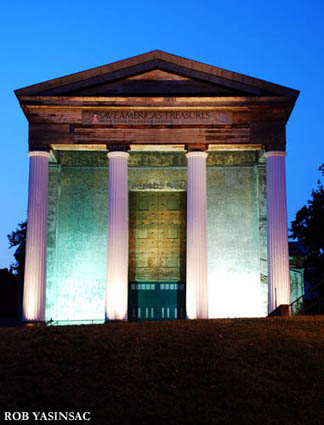
Dutch Reformed Church, Summer 2007.
NEWBURGH, NY

Dutch Reformed Church, Summer 2007.
In
the 1840s and 1850s, Newburgh was the playground of sorts of American
architecture, as leading American building designers started their careers there, worked there, and/or lived there. The most of famous of those taste-makers was Andrew Jackson Downing, the landscape architect. His home no longer
stands, but his memory is honored at Downing/Vaux Park. And the ruined City Club
(William Culbert House) is the only surviving example of a building designed by
Downing himself. Built as an urban dwelling, the house was enlarged by a social
club but remains an empty brick shell after a fire in 1981.
The other AJD, the architect Alexander Jackson Davis, also produced some of his
earliest works at Newburgh; the Dutch Reformed Church is one of Davis's crowning
designs in the Greek Revival style. Built in 1835, the church shut its doors in
1965 amid urban decline. Today it is still not in use, but preservationists
are bringing the
building back to life. The columns have been restored and the windows are
undergoing conservation treatment. Even in a state of semi-abandonment, the Dutch
Reformed Church inspires civic pride; the image of the building is used on street-light
banners throughout the city and appears in an idealized mural at the
public waterfront.
Another building abandoned during the downward urban spiral of the mid-late 20th
century is the West Shore Railroad Station. The architectural firm of Warren &
Wetmore designed this building for the New York Central Railroad, parent company
to the West Shore line. The last passengers disembarked here in 1958 and only
freight
trains rumble past the building today. Plans to restore and reuse
the building have come to naught (supposedly, City Hall insiders wouldn't allow
a new commercial eatery planned at the abandoned train station to compete with
their friends down at the much-touted waterfront, one block away). Partly damaged by fire in the 1980s, the
building has been stripped of nearly all interior architectural ornamentation,
though interesting exterior details reminiscent of New York City's Grand Central
Terminal survive.
Newburgh's industrial heritage survives in the form of light industrial concerns
that occupy buildings vacated when major manufacturing jobs dried up. At least
two major mills remain in use, the American Felt and Filter Company on the
Quassaick Creek and the Regal Bag factory on the Hudson. Other
factories have disappeared without a trace; one survives only in the form
of a brick smokestack covered in ivy.
As manufacturing declined and new methods of transportation changed the way
people moved in and around the cities, downtown businesses suffered and urban planners promoted
misguided revitalization schemes. Quite often neighborhoods inhabited by minority groups were
designated "blight" and targeted for destruction. Entire blocks of historic building stock, designed in human
scale and in pedestrian-friendly-manner, were torn down for new-fangled civic
centers and parking garages. Strip malls built outside town meant that
people should no longer spend money in the heart of the city. Or sometimes, as in
the case of Newburgh's Water Street, large swatch of buildings were simply not replaced at all. The loss of
commercial buildings surely hurt as much as the loss of manufacturing jobs. More
well-off residents fled downtown, and as crime rose and other social and civic
problems proliferated, the once-grand houses, apartment buildings and mansions
of Newburgh were left looking like a living haunted house display.
There are the occasional bright spots. In addition to the efforts underway at
the Dutch Reformed Church, another community organization called Safe
Harbors of the Hudson reclaimed the Hotel Newburgh and is now working to restore the famed
Ritz
Theater. Hopefully these projects will lead to other success stories of preservation,
adaptive reuse, and revitalization in Newburgh.
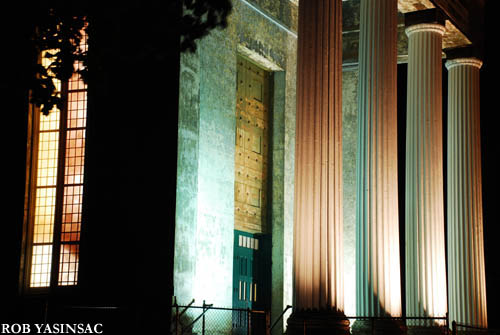
Dutch Reformed Church, Summer 2007
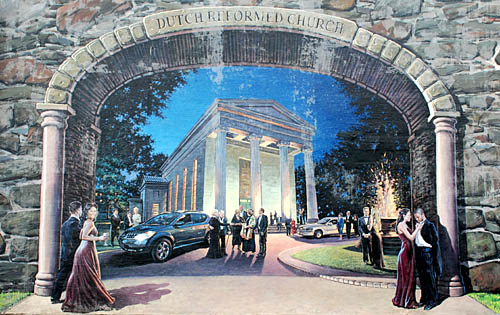
Painting of Dutch Reformed Church,
on the West Shore Railroad foundation wall at the waterfront.
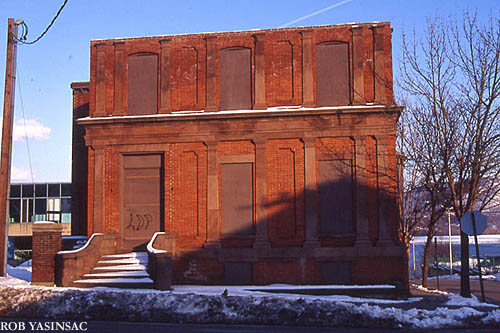
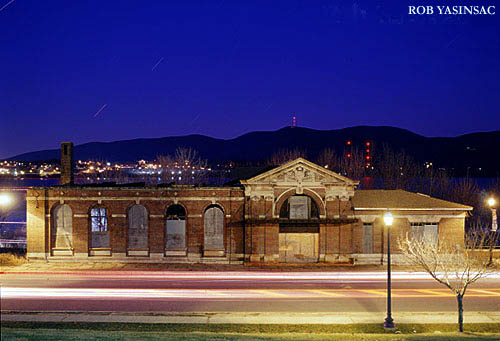
West Shore Railroad Station, Summer
2002.
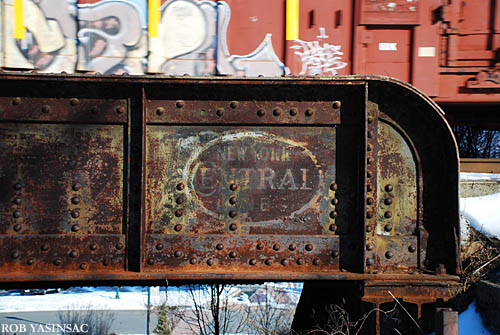
New York Central Railroad Bridge,
February 2008.
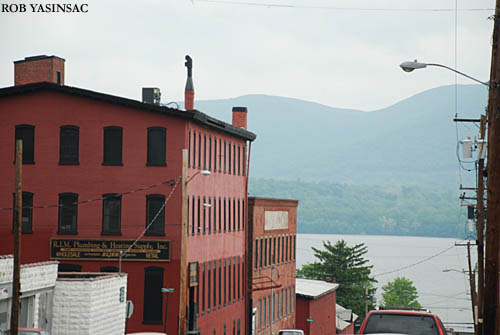
View of the Hudson River, past factory buildings
on Renwick
Street, May 2008.
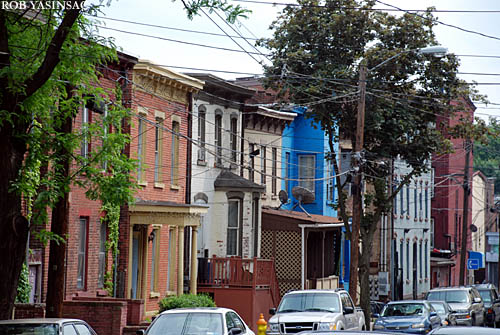
Attractive and inhabited, South Miller
Street, May 2008.
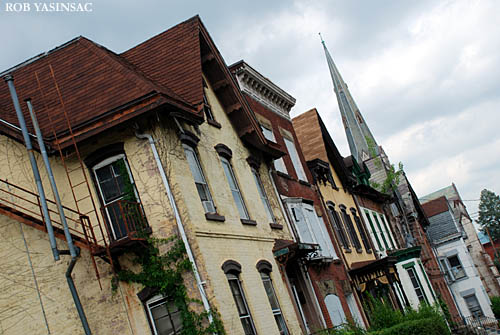
Gables and spires of Third Street, May
2008.
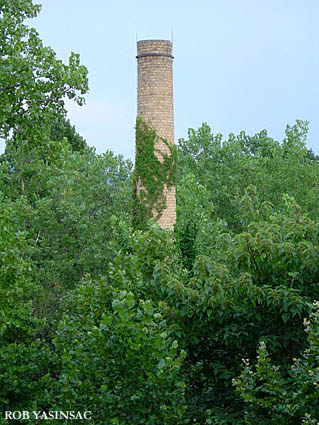
Chimney, Quassaick Creek, August 2005.
All that is left of a demolished factory.
![]()
Spotlights at Washington's Headquarters (Hasbrouck
House), celebrating
the 225th
Anniversary of the end of the Revolutionary War. November 25, 2008.
More photos of this illumination can be found at my
other website.
MORE NEWBURGH PHOTOS:
North of Broadway
South of Broadway
Ritz
Theater
Yaz’ Hudson
Valley Ruins and Abandoned Buildings, etc.
OTHER LINKS:
Tom
Rinaldi's Newburgh page - Hudson Valley
Ruins.
Newburgh Revealed -
Understanding Newburgh's past and revealing the both simple and complex sources of its problems.
This page copyright © 2008 by Robert J. Yasinsac.
Reproduction of these photos without the permission of Robert Yasinsac is prohibited.